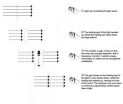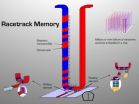(Press-News.org) Scientists have discovered the origin of a unique type of cell known for its ability to support regeneration in the central nervous system. Their findings, published this week in the journal Proceedings of the National Academy of Sciences USA (PNAS), raise the possibility of obtaining a more reliable source of these cells for use in cell transplantation therapy for spinal cord injuries.
Olfactory ensheathing cells (OECs), as the name suggests, ensheath and protect the nerve fibres in the olfactory nerve, which transmit olfactory (smell) information to the brain from receptor cells sitting in the lining of the nose. Excitingly, OECs can promote nerve repair when transplanted into the damaged spinal cord. They can also be grown in dishes from pieces of nasal lining but, unfortunately, in such small quantities that this may not be a viable option for use in treatments.
Dr Clare Baker, from the Department of Physiology, Development and Neuroscience at the University of Cambridge, lead author of the study, said: "In theory, one should be able to purify OECs from a patient's nose and transplant them into the damaged spinal cord to promote nerve repair, without any fear of graft rejection.
"Unfortunately, there aren't very many OECs in the nasal lining, and this tissue also contains other peripheral nerve fibres, ensheathed by cells that look very similar to OECs but which are less effective at promoting spinal cord repair. As a result, it has thus far proven difficult to purify sufficiently large numbers of OECs from the nasal lining for effective use in cell transplantation therapy."
For the last 25 years, OECs have been thought to be formed by the nasal lining itself. The new research, however, reveals a different origin for OECs that may enable scientists in the future to produce them in large quantities from adult stem cells.
The researchers, funded by the Wellcome Trust and the Isaac Newton Trust, have discovered that, like all other cells ensheathing peripheral nerve fibres, OECs are actually derived from a group of embryonic stem cells called "neural crest cells". Neural crest stem cells persist in adult skin and hair follicles, and other researchers have already shown that it is possible to isolate these stem cells and grow them in the lab.
Dr Baker said, "The next step is to work out how to turn these stem cells into OECs. To do this, we need to investigate how this process happens normally in the developing embryo."
Dr Baker continued, "It is important to note that it will take many years for our research to have any impact on therapy for people with damaged spinal cords. However, we are hopeful that our discovery provides a fresh starting point for new research into ways of purifying large numbers of these cells for use in treatments."
In order to determine the origin of OECs, the scientists tagged embryonic neural crest cells with 'green fluorescent protein' (GFP), so that only neural crest cells and their descendants glowed green under ultraviolet light. They did this in chicken embryos by transplanting GFP-labelled neural crest cells into unlabelled host embryos; they also looked at mouse embryos in which, through a genetic trick, the only cells that expressed GFP were neural crest cells.
They were then able to follow what happened to neural crest cells and their descendants as the olfactory nerve developed. By analysing thin sections of these embryos under the microscope, they were able to see that lots of green neural crest-derived cells were associated with the developing olfactory nerve fibres. These green cells expressed molecular markers characteristic of OECs, and crucially, they ensheathed bundles of the olfactory nerve fibres, i.e., they were indeed olfactory ensheathing cells.
INFORMATION:
For additional information please contact:
Genevieve Maul, Office of Communications, University of Cambridge
Tel: direct, +44 (0) 1223 765542, +44 (0) 1223 332300
Mob: +44 (0) 7774 017464
Email: Genevieve.maul@admin.cam.ac.uk
Notes to editors:
1. The paper 'Neural crest origin of olfactory ensheathing glia' will be published in the Early Edition the week of 15 November 2010 in Proceedings of the National Academy of Sciences (PNAS).
2. The Wellcome Trust is a global charitable foundation dedicated to achieving extraordinary improvements in human and animal health. It supports the brightest minds in biomedical research and the medical humanities. The Trust's breadth of support includes public engagement, education and the application of research to improve health. It is independent of both political and commercial interests. www.wellcome.ac.uk
3. The Isaac Newton Trust was established in 1988 by Trinity College. The objects of the Trust are to promote learning, research and education in the University of Cambridge. The Trust makes grants for research purposes within Cambridge University, administers the undergraduate Bursary Scheme and also offers a number of other funding schemes for the University and its constituent Colleges. http://www.newtontrust.cam.ac.uk/
Origin of cells associated with nerve repair discovered
Findings could one day lead to improved treatment of spinal cord injuries
2010-11-16
ELSE PRESS RELEASES FROM THIS DATE:
'Space-time cloak' to conceal events revealed in new study
2010-11-16
The study, by researchers from Imperial College London, involves a new class of materials called metamaterials, which can be artificially engineered to distort light or sound waves. With conventional materials, light typically travels along a straight line, but with metamaterials, scientists can exploit a wealth of additional flexibility to create undetectable blind spots. By deflecting certain parts of the electromagnetic spectrum, an image can be altered or made to look like it has disappeared.
Previously, a team led by Professor Sir John Pendry at Imperial College ...
Heavy smoking during pregnancy linked to kids becoming repeat offenders as adults
2010-11-16
Mums who smoke heavily while pregnant run the risk of having kids who grow up to become repeat criminal offenders, suggests research published online in the Journal of Epidemiology and Community Health.
The findings held true, even after taking account of a comprehensive range of family and social factors, such as mental ill health and deprivation, which are likely to influence behaviours, the research showed.
The authors base their findings on just under 4000 adults aged between 33 and 40, who were part of the Rhode Island cohort of the Collaborative Perinatal Project. ...
Passive smokers at increased risk of hearing loss
2010-11-16
Non-smokers who regularly breathe in others' tobacco smoke are at increased risk of some degree of hearing loss, reveals research published online in Tobacco Control.
Previous research indicates that former and current smokers are more likely to lose some of their full range of hearing, but it's not been known whether passive smokers are also prone to this.
The authors drew on 1999-2004 data from the National Health and Nutrition Examination Survey (NHANES), a yearly household survey combined with a physical examination of a representative sample of the US population. ...
US scientists significantly more likely to publish fake research
2010-11-16
US scientists are significantly more likely to publish fake research than scientists from elsewhere, finds a trawl of officially withdrawn (retracted) studies, published online in the Journal of Medical Ethics.
Fraudsters are also more likely to be "repeat offenders," the study shows.
The study author searched the PubMed database for every scientific research paper that had been withdrawn—and therefore officially expunged from the public record—between 2000 and 2010.
A total of 788 papers had been retracted during this period. Around three quarters of these papers ...
The color of medicine
2010-11-16
According to recent research the color, shape, taste and even name of a tablet or pill can have an effect on how patients feel about their medication. Choose an appropriate combination and the placebo effect gives the pill a boost, improves outcomes and might even reduce side effects. Now, researchers at the University of Bombay, New Mumbai, India, have surveyed users of over-the-counter (OTC) medication to find out just how much the color of a tablet influences patient choice.
Writing in the International Journal of Biotechnology, R.K. Srivastava and colleagues report ...
Brain size and a trip to Disneyland
2010-11-16
Evidence from Disneyland suggests that human creativity may have evolved not in response to sexual selection as some scientists believe but as a way to help parents bond with their children and to pass on traditions and cultural knowledge, a new study published in the inaugural issue of the International Journal of Tourism Anthropology suggests.
Evolutionary psychologist Geoffrey Miller of the University of New Mexico has suggested that human creativity, storytelling, humor, wit, music, fantasy, and morality, all evolved as forms of courtship behavior. He used evidence ...
New way of predicting dominant seasonal flu strain
2010-11-16
HOUSTON -- (Nov. 15, 2010) -- Rice University scientists have found a way to predict rapidly whether a new strain of the influenza virus should be included in the annual seasonal flu vaccine. While it sometimes takes new flu strains up to three years to become dominant worldwide, the new method can predict whether they will become dominant as little as two weeks after the sequence first appears in the GenBank database, the National Institutes of Health's collection of all publicly available DNA sequences.
"We studied a new strain of the virus that evolved in British Columbia ...
Child/teen sexual and physical abuse linked to fibroids in premenopausal women
2010-11-16
(Boston) - Researchers from Boston University School of Medicine (BUSM) have found that both physical and sexual abuse history were positively associated with a higher incidence of uterine fibroids later in life. These findings currently appear on-line in the journal Epidemiology.
Uterine leiomyomas, also known as fibroids or myomas, are benign, hormone-dependent tumors that are clinically symptomatic in 20 percent of reproductive age women. Fibroids contribute to a third of hysterectomies in the US, increase risk of infertility, spontaneous abortion and pelvic ...
Racetrack memory
2010-11-16
Annoyed by how long it took his computer to boot up, Kläui began to think about an alternative. Hard disks are cheap and can store enormous quantities of data, but they are slow; every time a computer boots up, 2-3 minutes are lost while information is transferred from the hard disk into RAM (random access memory). The global cost in terms of lost productivity and energy consumption runs into the hundreds of millions of dollars a day.
Like the tried and true VHS videocassette, the proposed solution involves data recorded on magnetic tape. But the similarity ends there; ...
When video games get problematic so do smoking, drug use and aggression
2010-11-16
A new study on gaming and health in adolescents, conducted by researchers at Yale School of Medicine, found some significant gender differences linked to gaming as well as important health risks associated with problematic gaming. Published today in the journal Pediatrics, the study is among the first and largest to examine possible health links to gaming and problematic gaming in a community sample of adolescents.
Rani Desai, associate professor of psychiatry and epidemiology and public health at Yale, and colleagues anonymously surveyed 4,028 adolescents about their ...
LAST 30 PRESS RELEASES:
NTIDE: Disability employment holds steady after data hiatus
Social lives of viruses affect antiviral resistance
Dose of psilocybin, dash of rabies point to treatment for depression
Helping health care providers navigate social, political, and legal barriers to patient care
Barrow Neurological Institute, University of Calgary study urges “major change” to migraine treatment in Emergency Departments
Using smartphones to improve disaster search and rescue
Robust new photocatalyst paves the way for cleaner hydrogen peroxide production and greener chemical manufacturing
Ultrafast material captures toxic PFAS at record speed and capacity
Plant phenolic acids supercharge old antibiotics against multidrug resistant E. coli
UNC-Chapel Hill study shows AI can dramatically speed up digitizing natural history collections
OYE Therapeutics closes $5M convertible note round, advancing toward clinical development
Membrane ‘neighborhood’ helps transporter protein regulate cell signaling
Naval aviator turned NPS doctoral student earns national recognition for applied quantum research
Astronomers watch stars explode in real time through new images
Carbon-negative building material developed at Worcester Polytechnic Institute published in matter
Free radicals caught in the act with slow spectroscopy
New research highlights Syntax Bio’s platform for simple yet powerful programming of human stem cells
Researchers from the HSE University investigated reading in adolescents
Penn Nursing study: Virtual nursing programs in hospitals fall short of expectations
Although public overwhelmingly supports hepatitis B vaccine for a newborn, partisan differences exist
DFW backs UTA research to bolster flood resilience
AI brain scan model identifies stroke, brain tumors and aneurysms – helping radiologists triage and speed up diagnoses
U.S. News & World Report gives Hebrew Rehabilitation Center highest rating
Optica and DPG name Antoine Browaeys 2026 Herbert Walther Award recipient
The presence of a gun in the home increases the risk of suicide by three to five times
PFAS exposure and endocrine disruption among women
Vaccines and the 2024 US presidential election
New approach narrows uncertainty in future warming and remaining carbon budget for 2 °C
When pregnancy emergencies collide with state abortion bans
American College of Cardiology supports front of package nutrition labeling
[Press-News.org] Origin of cells associated with nerve repair discoveredFindings could one day lead to improved treatment of spinal cord injuries



